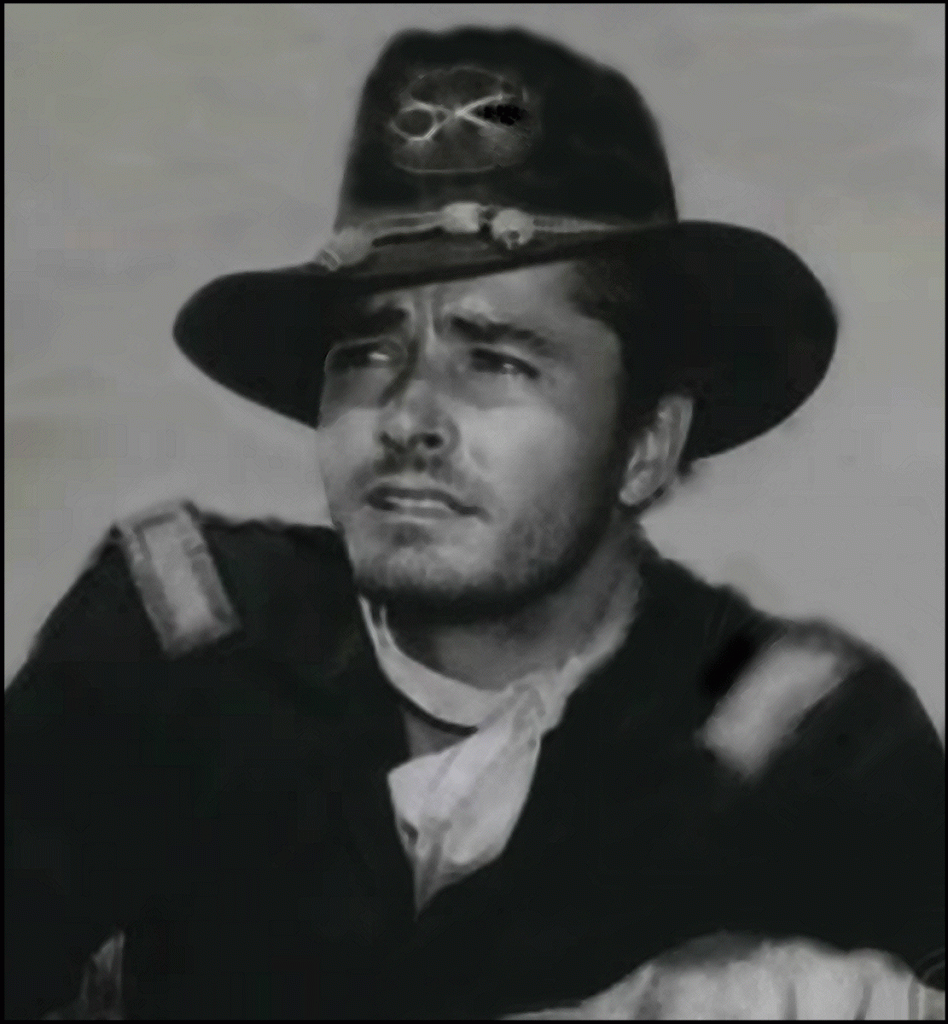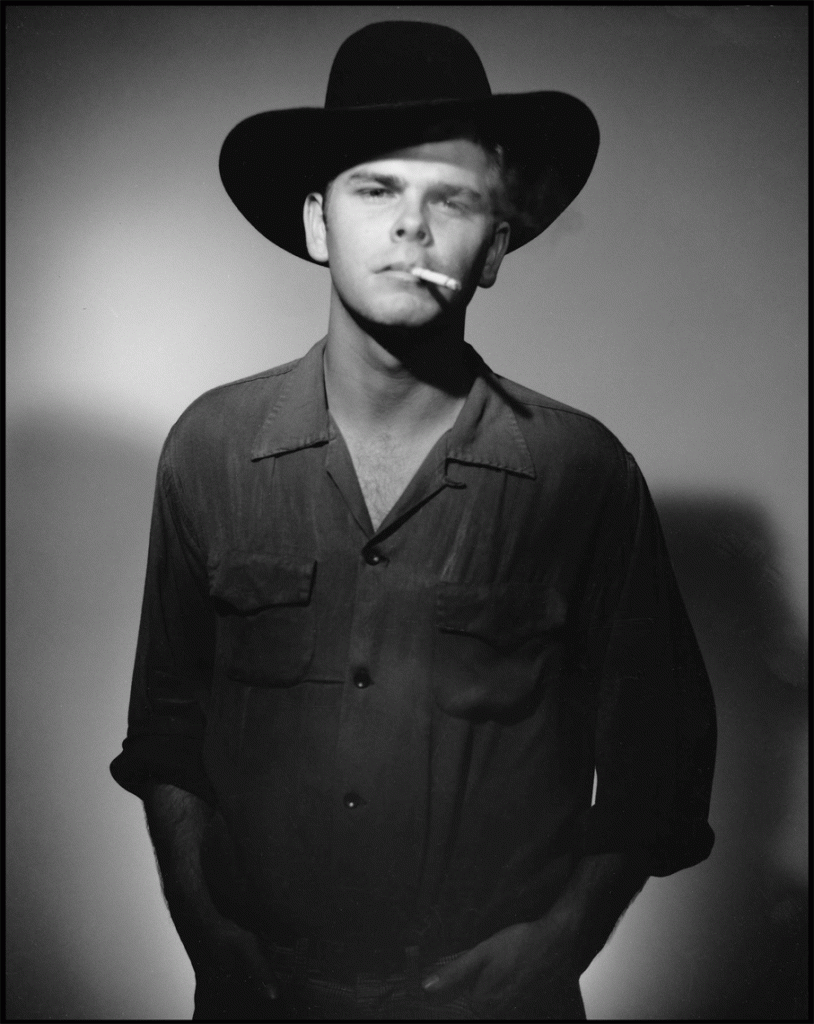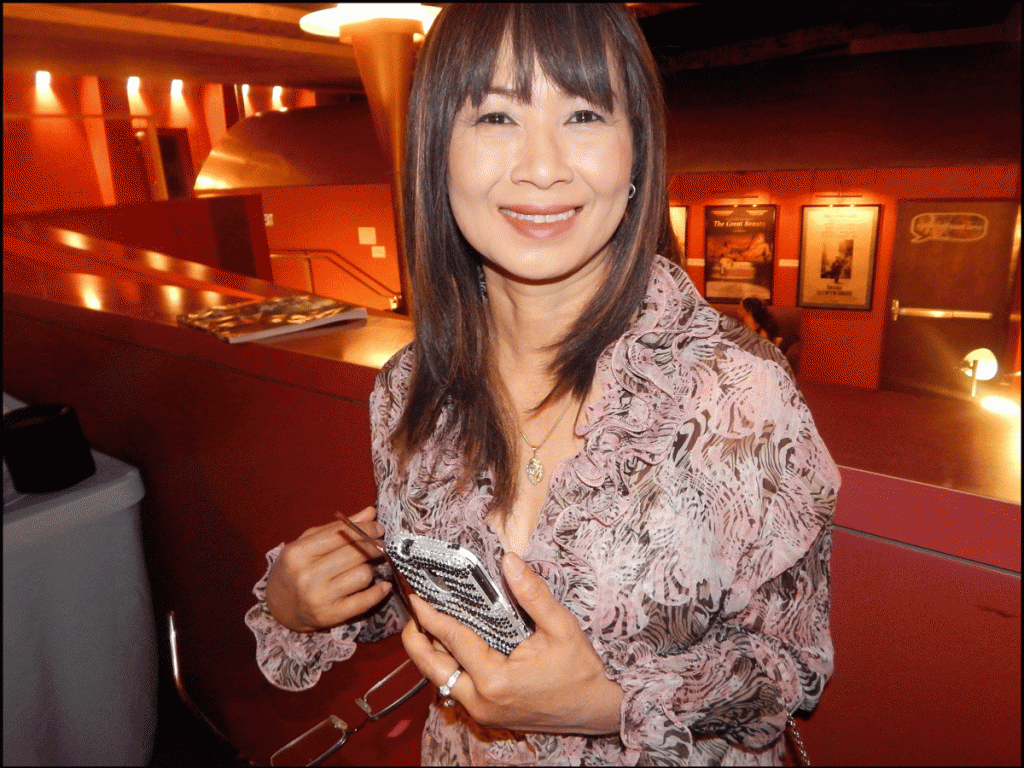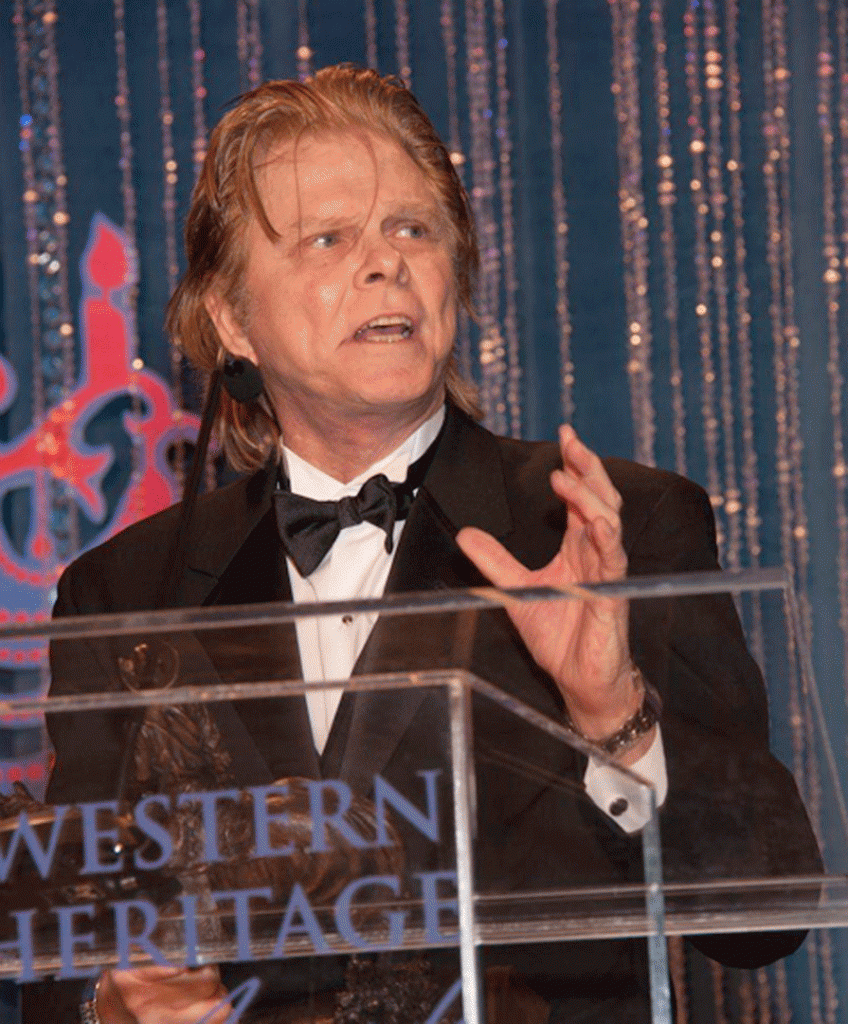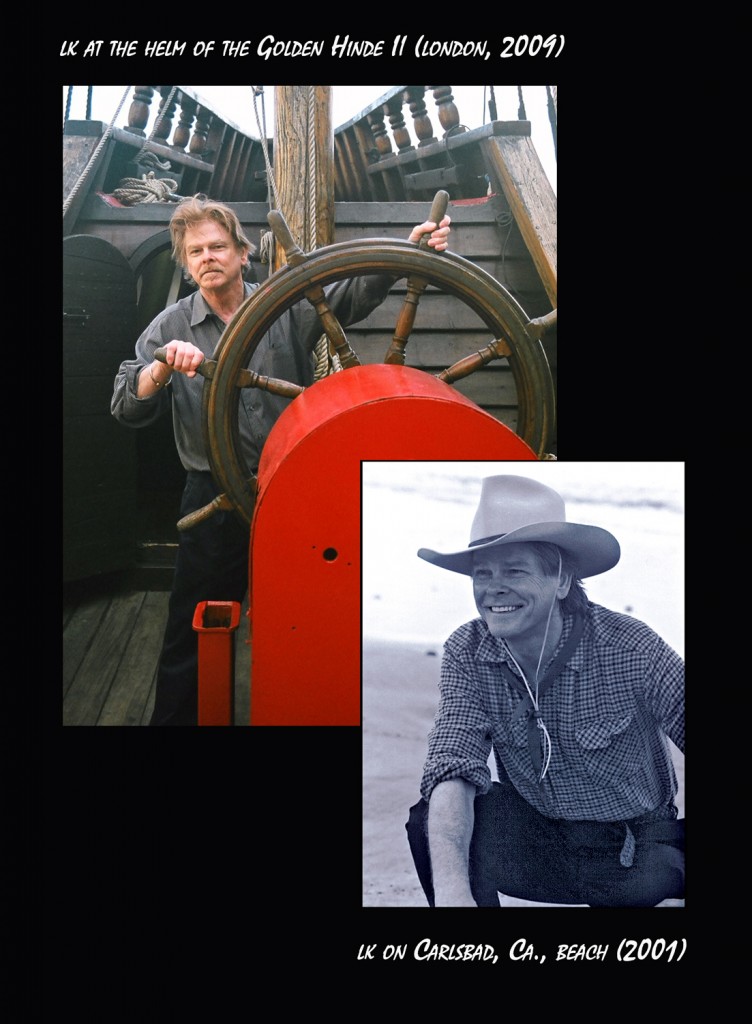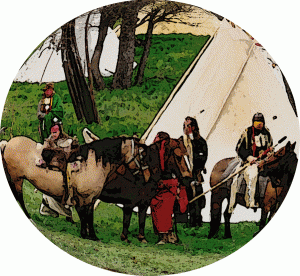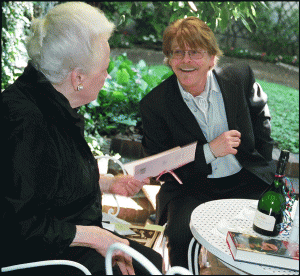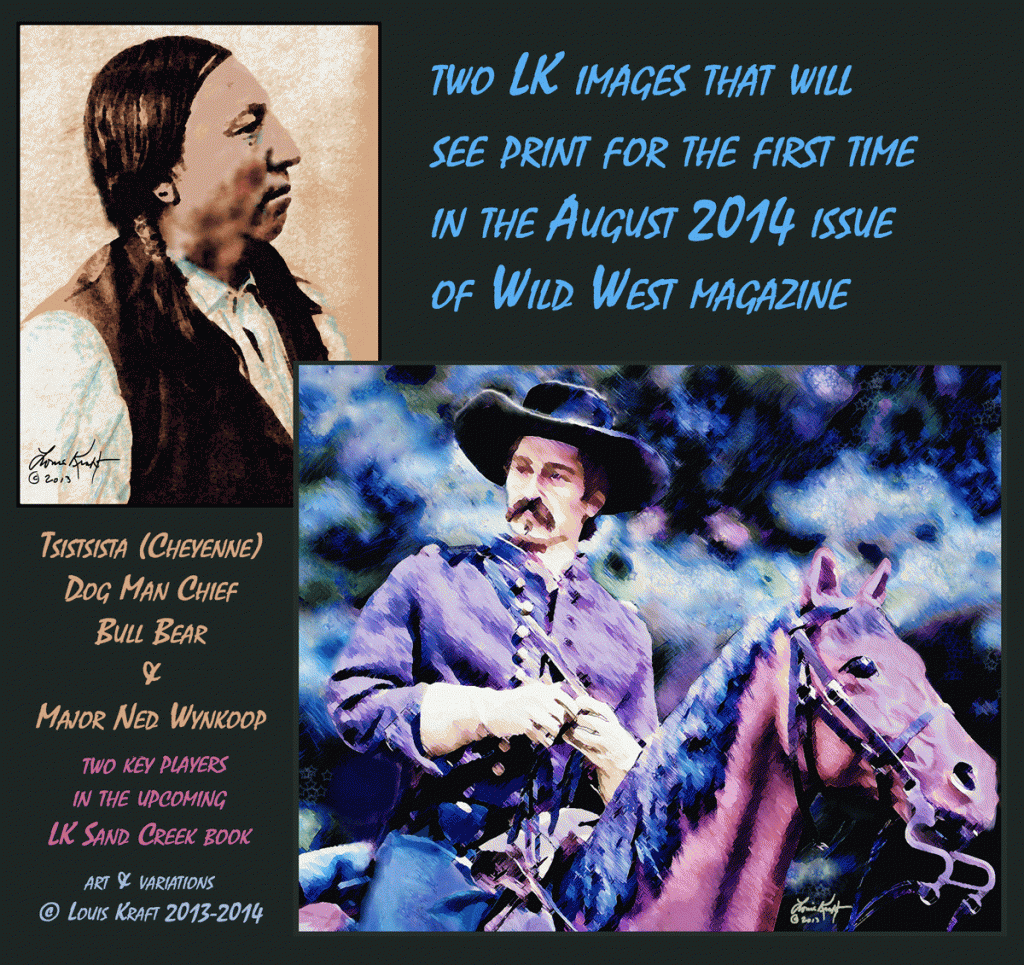Website & blogs © Louis Kraft 2013-2020
Contact Kraft at writerkraft@gmail.com or comment at the end of the blogs
- Those of you who read my Indian wars writing will be shocked.
- Those of you who know me but not my writing will also be shocked.
Kraft, what the hell are you talking about?
The Discovery
The Discovery fell into my lap while I wrote for Yahoo! and functioned as a consultant for the beginning of a medical malpractice-legal thriller by a physician I’ve known for 25 years—Robert S. Goodman.
… From the early 1950s until shortly before his death in 1987 my father-in-law was my
physician. He was one of the top doctors in the San Fernando Valley, and
had—believe it or not—been my family’s doctor since 1954 (I didn’t
meet my first wife until I was a junior in college). And let me tell you
there were perks. I guess that the major one was that after the
marriage and until after his death I never had to buy health
insurance. Other doctors didn’t charge me, and neither did
my dentist. My daughter’s birth had a total cost of zero
dollars. Yes, early in my adult life I learned of the
benefits of befriending one’s doctors.
Not that I use my doctors (all of whom are specialists), for I never have. I have befriended them, but this has always been a patient-doctor relationship. We talk about medicine, health, insurance, play scripts, fiction, nonfiction, their writing, my writing, and I share. They learn a little from me and are even open to learning more while I learn a lot from them (my side of the learning basically deals with my health).
A short diversion with my father, violence, and earning a living
Just before my father died (1999; 19 years after his wife/my mother died) he said to me, “If I knew I’d live this long I’d have taken better care of myself.” (All I can say to that is, “Me too.”)

In the late 1940s and into the early 1950s my father climbed the Esso gasoline world. By the 1950s he appeared to be a person on the rise in the company. The Esso Gasoline Corporation did a round of publicity shots that they used in their advertising with him as the leading model. At that time he managed three Esso gas stations in Yonkers, New York. What the company didn’t realize was 1) My father hated being told what to do (shades of LK Jr) and 2) he hated the weather in New York. In the 1940s my mother and father, who had explored SoCal at least twice, did it once again in 1949 with your truly (but unfortunately I remember nothing). That trip ordained their and my future, and it wouldn’t be in New York.
On February 13, 1999, the last day I saw my living father as I knew him, he said to me as I left, “I love you, Louis.” Two of the words he had never used before: “love” and “Louis.” I had chosen to use “Louis” when I became an actor (he along with others struggled with this). As far as “love” goes, he always loved me, even when we didn’t get along, which stretched all the way to my mother’s/his wife’s death and decades before. The last 10 days of her life put us together during all of our waking hours. My mother/his wife’s last hours on earth gave us a relationship, that is her passing ended his quest to rule my life and accept that I would not march to the beat of his drum.
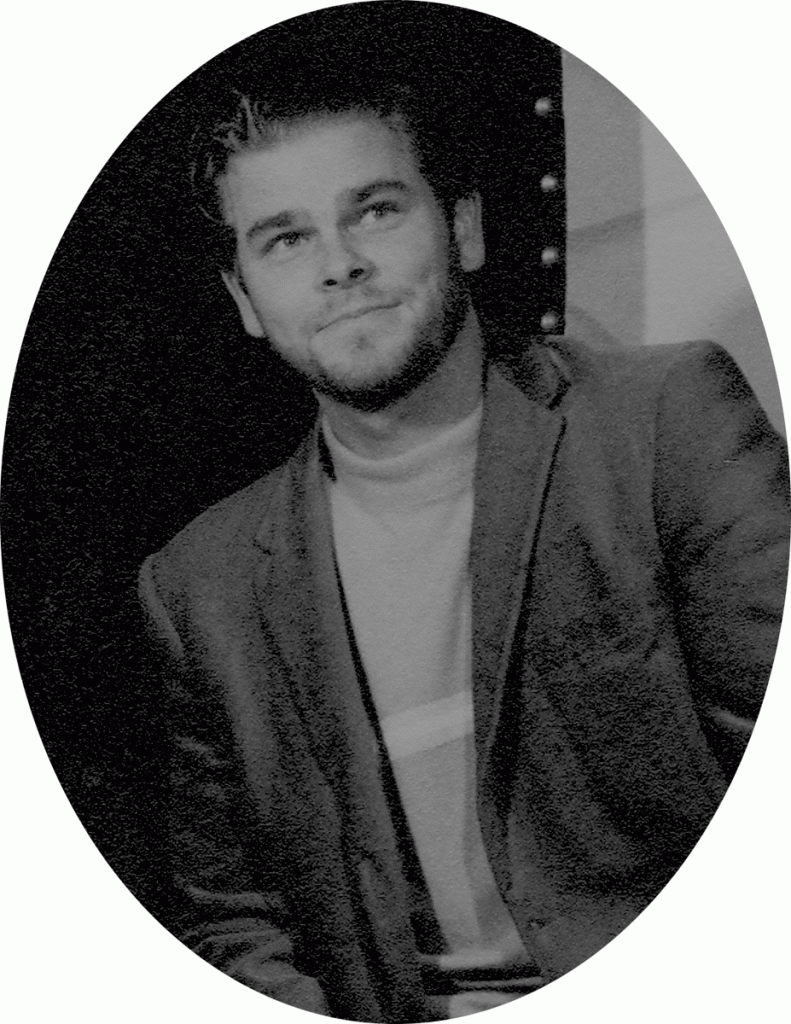
LK at the time of these bullets. Actually this image was pulled from a three-shot of LK, Santa Claus, and another person. I have four of these photos. One is definitely the first of the four and dates to the end of the 1960s but the other three can be shuffled and all date to the early 1970s.
For example:
- Once my father knocked me cold at home when a friend visited.
- Soon after a girl who perhaps outweighed me by 50 to 100 pounds ran me over while I was going about three or four miles per hour on my motorcycle when she was running and broadsided me and hit me in the face with her hands. She broke my sun glasses which cut her fingers, but that was it—she didn’t even fall down. This was in Woodland Hills, California (then a rural area). The motorcycle shot across the street, jumped the curb, and went through a chain link fence that blocked entry to a field and hills. I was left hanging knocked out on the top of the fence (thank God for helmets!). I didn’t walk for weeks, and my father was there for me.
- Another time I became a little too angry (the last day I ever lived at home) and aggressive (I’m being kind to me here), and I frightened him. He called the police. Within minutes three or four squad cars arrived with sirens blasting and guns in evidence when the officers stepped from their vehicles. I exited the house with hands raised. My father was right behind me and he talked the officers out of making an arrest. Even though there seemed to be a bloodlust pushing us toward a not-too-good ending he stood behind me, protected me, and pulled me to safety. (That night I slept in my girlfriend’s car in a parking garage below her father’s apartment. The next morning the infamous February 1971 earthquake destroyed portions of the San Fernando Valley. Jerked awake I ran out of the parking structure to see tidal waves washing out of the pool. The three-story apartment complex buildings waved in the breeze like 1930s cartoons. The view was unreal.)
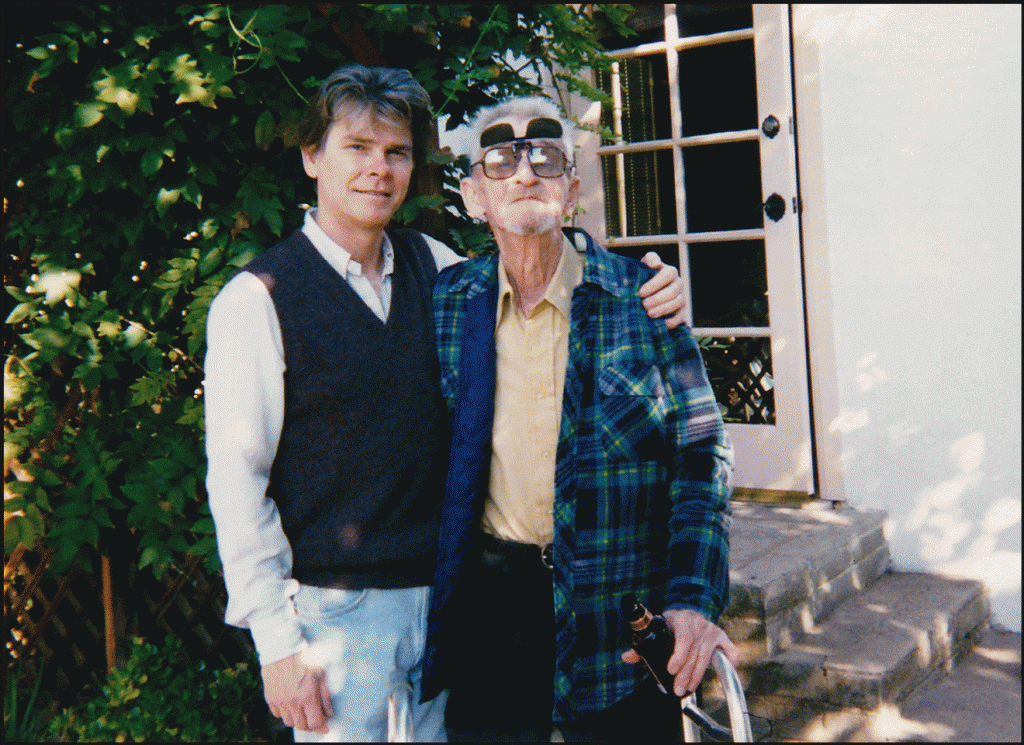
LK & LK Sr. in the back yard at Tujunga House on Thanksgiving 1995 (three years two and a half months before his death). He loved the garden at Tujunga House, and I’m certain he’d be shocked if he saw it now. This day is special to me, as are all Thanksgivings and Christmases (and I cook traditional meals). Christmas is the celebration of Jesus Christ’s birth and Thanksgiving is the celebration of the Pilgrims’ first harvest of crops with the Wampanoag Indians in Plymouth in 1621. They are not the extravaganza of sales that is currently stuffed down Americans’ throats today. Unfortunately business greed has overwhelmed America and has done everything possible to negate these special day’s true meaning. I’ll be damned if I’ll stand in line and elbow strangers to buy, buy, and buy more as publicity departments pound the American public to do from every direction that it is almost demoniacal. … On this 1995 Thanksgiving, perhaps 10 minutes after this image was taken, my father observed for the first time a grand mal seizure to one of the most special person in both of our lives. It shocked him, as it would you. There is a lot of harsh reality in this world, and much of it most people don’t experience. (photo © Louis Kraft 1995)
Eventually time would change even though we still had clashes, while I survived in a world that was different from his. He saw this, and although it would take years he accepted it. The point of this section is simple. My father gave me the strength to be me, and although at times it looked as if one of us could have killed the other we didn’t. If not for him I’m certain that my life would not have been as it has been. Our battles pushed me to challenge him. They also gave me the courage to follow my winding trail of life. I do as I please and my profession is what I choose. I have no regrets for everything in my life happened for a reason. You can bet that I believe in cause and effect. That said my life always has goals prominently leading the way. Someday the end will come and a goal or two won’t have been reached but if that is how it ends I’m good with it.
Back to The Discovery and physicians
This simple formula of how I relate to my physicians has opened doors to my life. It has given me friends in a world in which I haven’t known other than how it applies to my health. Bob Goodman is directly responsible for me walking this earth for the last 12+ years (as is urology specialist Malcolm Cosgrove, who performed a surgery that continued my life in 2003).
Trust me, these two gentlemen, along with other physicians, are people that I have befriended and helped whenever possible.
One of many clipart images that symbolize medicine. This will not appear on The Discovery cover. It is here as I must soon begin thinking of cover art. I think that the doctor whose life spirals toward an explosive end must dominate the cover. I also think that a 1952 incubator needs to be on the cover as well as the doctor’s wife who is an essential key to the plot (but both she and the incubator must be secondary to the doctor. Looming behind the doctor must be a shadow that symbolizes the court system. Just like my studying whatever I read and every film that I look at I also study book covers. Simple is better, but it cannot be vague nor can it mislead the reader.
At the end of November 2013 Bob Goodman asked me to partner with him on The Discovery (read: I write the manuscript based upon his rough draft and great idea). I was hesitant as I write seven days a week on my books and blogs. He offered upfront $$$. I told him I’d think about it. I decided to turn down the offer (which I knew would hurt him), but then I received a bill for an uninsured operation that I didn’t know about until after the fact. This was a big ouch as I then earned about 20 percent of what I earned when Oracle and I parted company in 2012. The up-front money paid for my half of that unexpected operation. I accepted the partnership in his updated but still incomplete novel sight unseen.
That was a big mistake by me, but at the same time it eliminated a bill that I couldn’t afford to pay.
To repeat myself accepting the partnership was a big mistake, but it did eliminate a bill that I couldn’t afford to pay. I’m still putting in a lot of hours on The Discovery project (a recent week logged over 70 hours). But—BUT I’m in control and I’m working on a manuscript that I think will be one of the best that I ever write (the story spans over two decades, has multiple players, and yet I’ve figured out how to pull everything together and make it work while keeping it believable).
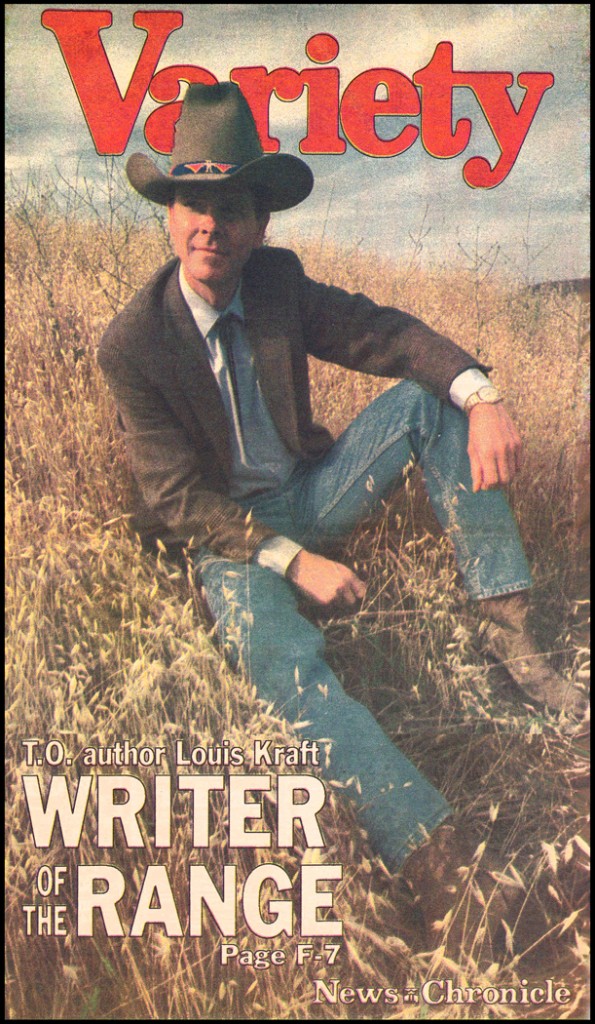
This is the cover for the Variety section of the Thousand Oaks News Chronicle (15may1992). The Final Showdown was published in April 1992 and my divorce was final in April 1992. At that time I owned with my ex-wife two houses (one in Encino and one in Thousand Oaks), and she got both houses. The TO house, which is in Ventura County, was a gorgeous two-story home a half block walk into the Santa Monica Mountains. Swimming has always been my favorite sport and at that time I swam 70 laps (no big deal when compared to the 30+ laps I used to swim at 24 Hour Fitness in an Olympic-sized pool). Nevertheless I loved living there. When the News Chronicle contacted me for the interview/article I lived in Tarzana (in Los Angeles County). The writer wanted to interview me at home. At that time I wrote for a telecommunications firm in El Segundo (south of LAX). I asked him to drive to El Segundo. He didn’t want to, so I talked him into two phone interviews. At the end of the interviews he told me that a photographer needed to take pictures of me at my TO home. “Why?” I asked. He said, “If you don’t live in Venture County we won’t print the story about you.” I called my ex-wife and explained the situation. She told me that as long as I didn’t enter the house I could take as many photos outside that I needed. Good for me. On the day of the photo shoot I arrived early at my former home and met the photographer outside. We shot images in the courtyard. He then wanted to go inside. I asked if he wanted to take pictures of me at my computer and he said “yes.” “I have a better idea,” I told him. “What’?” “Let’s shoot on the hill after you exit the 101 freeway and drive south into the Santa Monica foothills.” He loved the idea, and the Variety cover is the result. BTW the Thousand Oaks News Chronicle at that time was just like the LA Times. It even mimicked the Times’ entertainment section and was folded in half and opened like a magazine. (© Thousand Oaks News Chronicle 1992)
BTW, I’m not a novice at writing fiction. For almost a decade beginning in 1976 and extending to 1985 a screen writing agent and a TV writer/producer took me under their tender tutelage. Under their care I learned how to write dialogue, create characters, and design plots that move forward. By the late 1980s I moved on to fiction. The Final Showdown was published in 1992, and I had a follow-up contract for a Kit Carson/Navajo story (if you’ve read previous blogs you know what happened here and what my future became). Don’t doubt me, folks, my move to nonfiction has been the best working (not writing, but working) decision in my life for it directly led to my writing for the software world and eventually earning over six figures). It also gave me the best writing that I’ve ever done in the Indian wars nonfiction field, and believe me there are nonfiction books on the horizon that will be better than anything that I’ve written in the past.
All the above said, and as of the beginning of September 2015, I’m thrilled that I partnered with Bob Goodman. We will have a good story, and I think that it will be a page turner. What more could a writer ask for?
Bob Goodman had a great idea for The Discovery, but he had/has no clue on how to write characters, dialogue, plot, or a novel. Actually his spelling sucked and his research was worse. My new partner had told me that he had polished what he had and in which I had reviewed and had included my major suggestions on how to improve the story. I don’t want to say that his words were an understatement but they were. He had no chapters, just pages—some with one paragraph and others with a half page of text. Sometimes scenes would be repeated, … You get the picture. That said Bob Goodman’s idea for The Discovery was terrific.
My work was a challenge but one I embraced. And best, I had no restrictions. The manuscript will be published, and I know that I’ll take a lot of negative heat, and if you ever read the book you’ll know why. But The Discovery will open the door for my return to fiction. Fiction is a touchy subject to a number of people including me. Why me? Because I still have to complete Sand Creek and the Tragic End of a Lifeway, would like to do a nonfiction book on Kit Carson, and must finish Errol & Olivia (which is the first of a planned trilogy on Flynn). That’s a lot of nonfiction writing staring me in the face. In case you don’t know it nonfiction takes a lot longer as almost every day I’m studying the known facts (that is primary source material). It probably takes me at least five times as long to write a page of nonfiction than it takes me to write a page of fiction. For the record I use secondary nonfiction material only when necessary (for many-many reasons).
My first novel after The Discovery will deal with the Navajo Indians (or as they were called and as they call themselves, the Diné).
A return to Sand Creek
As hinted at in this blog The Discovery has absolutely killed me time wise (and there are other reasons that I’ll probably never mention). I’ve also said that I’m thrilled with the manuscript, and that’s good. … But Sand Creek and the Tragic End of a Lifeway is my main book project and it has been so since the contract was signed. It is now and must remain my number one priority until it is published. What I still need to do on The Discovery has now been regulated to extra work, by that I mean that it will happen after hours (just like these blogs are created; at night and after I’ve completed my day’s work).
Although I’ve said it in the past I’m saying it again here. When I work on nonfiction I write from primary source (and secondary source when necessary) information. I study the primary source information and compare to other primary source information that I’ve been able to locate and obtain from archives or from historian friends that share their primary source documentation with me. I make every effort to confirm what I think is what happened. For me this is a slow process, and it gets even slower when I attempt to write what I believe happened from my understanding of my research.
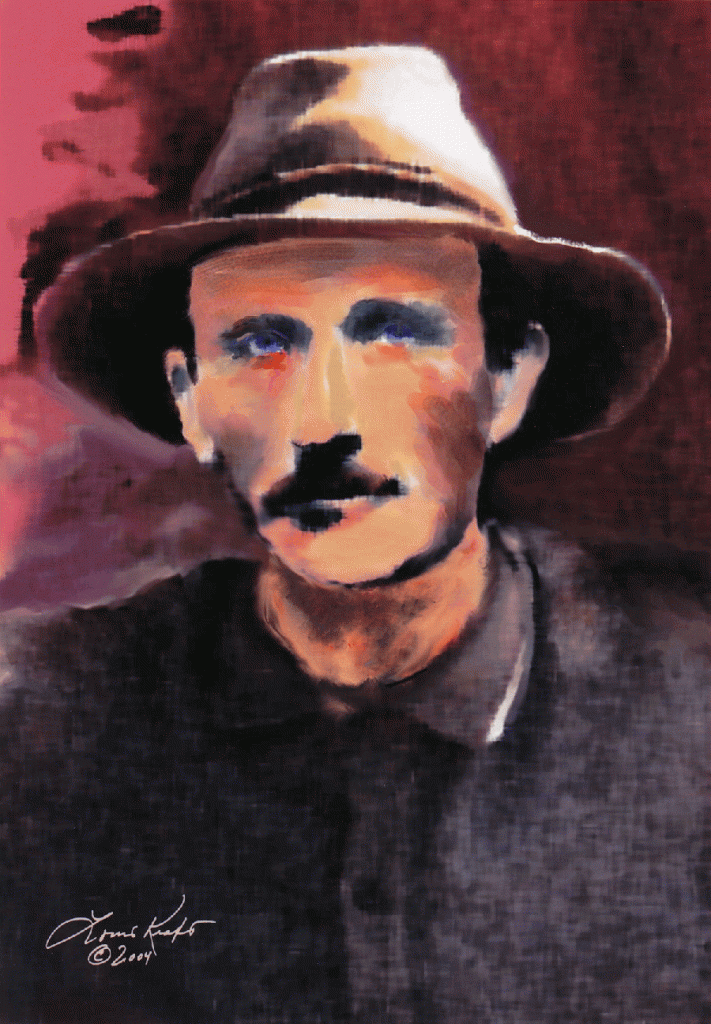
The LK portrait of Gatewood was first published in Lt. Charles Gatewood & His Apache Wars Memoir (University of Nebraska Press, 2005). Over the years it has been printed three times. (art © Louis Kraft 2004)
The Charles Gatewood books and the Ned Wynkoop book were new territory as no one in the past had written about them with them as the focus of the book. Most often they received a paragraph here or a paragraph there or once in a while a few thousand words. Often much of what was said about them had already been printed and that mostly in anthologies. Primary resource books, especially for Gatewood, have contained nuggets about them that are invaluable but they were far too little (and often in obscure books that didn’t advertise their presence in the volumes). One of the reasons for this is that both stood up to authority: That is to the military, the U.S. government, and the press when they thought that they were correct in their beliefs.
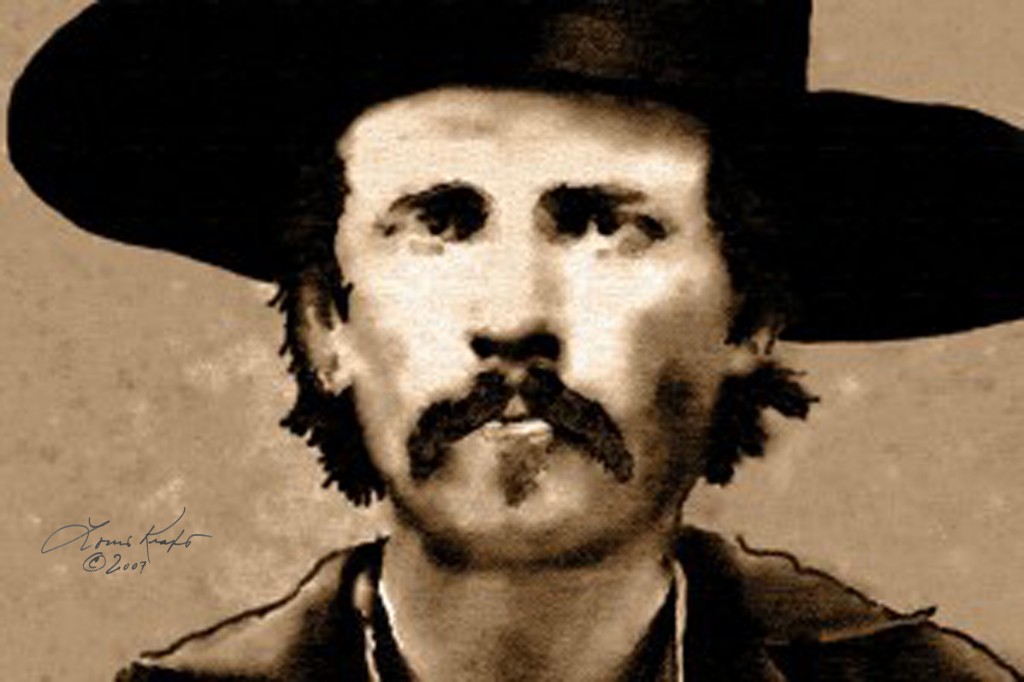
The LK portrait of Wynkoop was first published in “Ned Wynkoop’s Lonely Walk Between the Races,” Custer and His Times, Book Five (The Little Big Horn Associates, Inc., 2008). Over the years it has been printed five times. (art © Louis Kraft 2007)
Both men accomplished extraordinary feats during the Indian wars—not feats in war with notches on their revolvers but feats of preventing war or ending war or attempting to end war. They actually accepted the people in conflict with the United States as human beings and not vicious subhumans that were capable of little more than theft, rape, and murder. This was not a popular view in the 1860s (Wynkoop) or the 1880s (Gatewood) and as such the press, the military, and even the U.S. government chose to ignore their efforts and exile them (Gatewood) or better yet bury them (Wynkoop) in an avalanche of negative press and criticism by a military ordained to control American Indians as the United States basically stole their land through treaties that the Indians didn’t understand and worse didn’t represent the agreement by most of the tribe (Cheyennes). For the Apaches it was different, for they had been forced onto reservations and when portions of them fled being little more than prisoners of war they were treated as if they were outlaws … and not people who were losing their homeland, their religion, their language, their children, the lifeway and their freedom.
When the colonists revolted against British rule in the eighteenth century they became patriots, but this was not the British point of view (POV), which is a film term that I explained in Custer and the Cheyenne: George Armstrong Custer’s Winter Campaign on the Southern Plains (Upton and Sons, Publishers, 1995). Why not the Apaches and the Cheyennes? Wasn’t their revolt similar? The soon to be Americans fought to free themselves from a tyrannical overrule while the Apaches and Cheyennes fought against a massive enemy that wanted their land at all costs.
Sand Creek is turning into becoming the most difficult book that I have ever written. Why? Simply put I’m attempting to tell the story through a handful of major players from five distinct categories. I want to bring the leading players (as well as major secondary players) to life through their actions and words. This is considerably more difficult than it sounds. Not because I’m viewing the lead-up to the attack at Sand Creek, the attack at Sand Creek, and the aftermath of the attack through the eyes of the players but because there isn’t a lot of primary source material on these players (and often secondary sources are light on information, or worse heavy on mis-information).
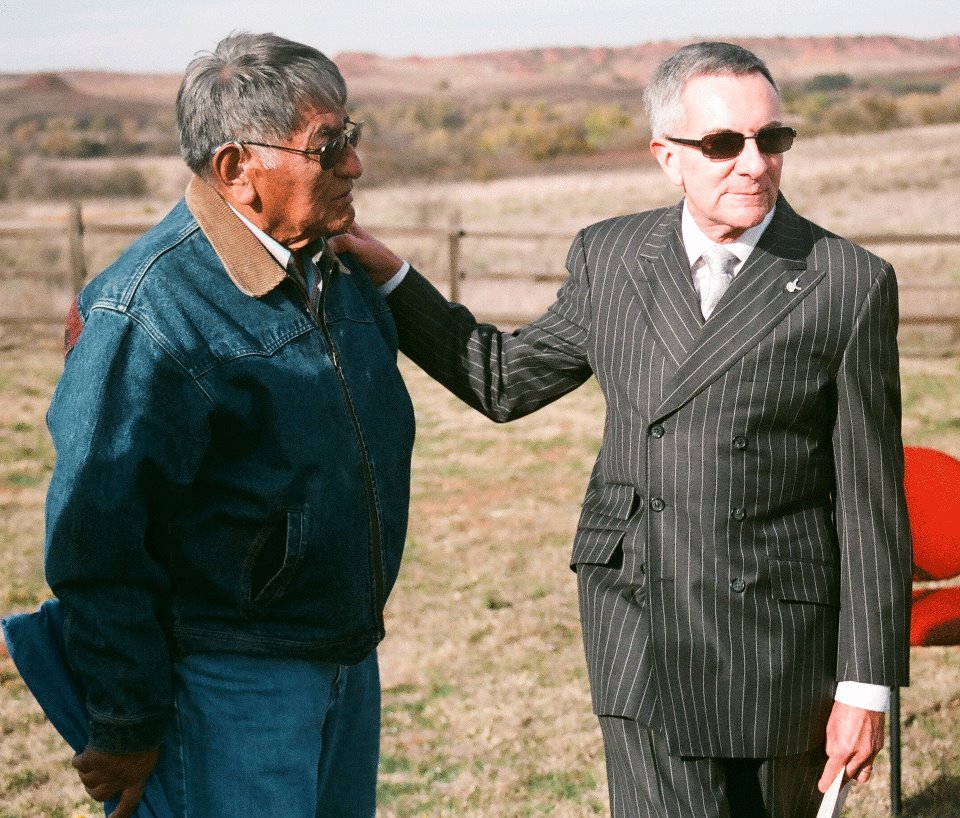
After the speakers and music completed at the Washita Battlefield NHS overlook on 11nov2011 I captured this image of Moses Starr of the Red Moon Singers & Drum Group (left) and W. Richard (Rick) West. I met Rick for the first time before the event began and then spent a lot of time with him on the 12th, when we both spoke at the symposium and also lunched together. We had plenty of time to talk. Rick is a Cheyenne peace chief. He is also the founding director and director emeritus of the National Museum of the American Indian at the Smithsonian in Washington D.C. Recently he became president and CEO of the Autry National Center in Los Angeles, Calif. (I believe in December 2012). To date I have held off contacting him about my problem with the Southwest Museum. (photo © Louis Kraft 2011)
For the book to work I must find the required information, and this hasn’t been easy and especially so since the George Bird Grinnell archive at the Braun History Library at the Southwest Museum (Los Angeles that I mined in June 2014 for 12 days has still not delivered material that I requested and was supposed to have received no later than September 2014. One might say, “Kraft, tell them to keep the damned material!” Believe me I’ve thought of this more than once, and it’s pretty bleeping hard to keep a civil tongue each time I approach the archive on the status of this important delivery. My guess, I’ll probably receive the material in 2017 (which is beyond my manuscript delivery date). I should know better, for the archive had missed a deadline for a single image permission I needed to use one photo (that’s right, one photo permission for an image that I had already used in Gatewood & Geronimo) for the second Gatewood book (and they had about six months to create the permission). That wasn’t enough time, and the Southwest didn’t deliver, … my deadline came and passed and I used another image from an archive that knows what deadlines are. Yes, I am well aware of their less than sparkling track record (and yes, there is a hint of sarcasm here). But It is now magnified as I’m trying to present the Cheyennes in a way that I’ve never done before, and here I must succeed for the manuscript to have any chance of working as I envision it.
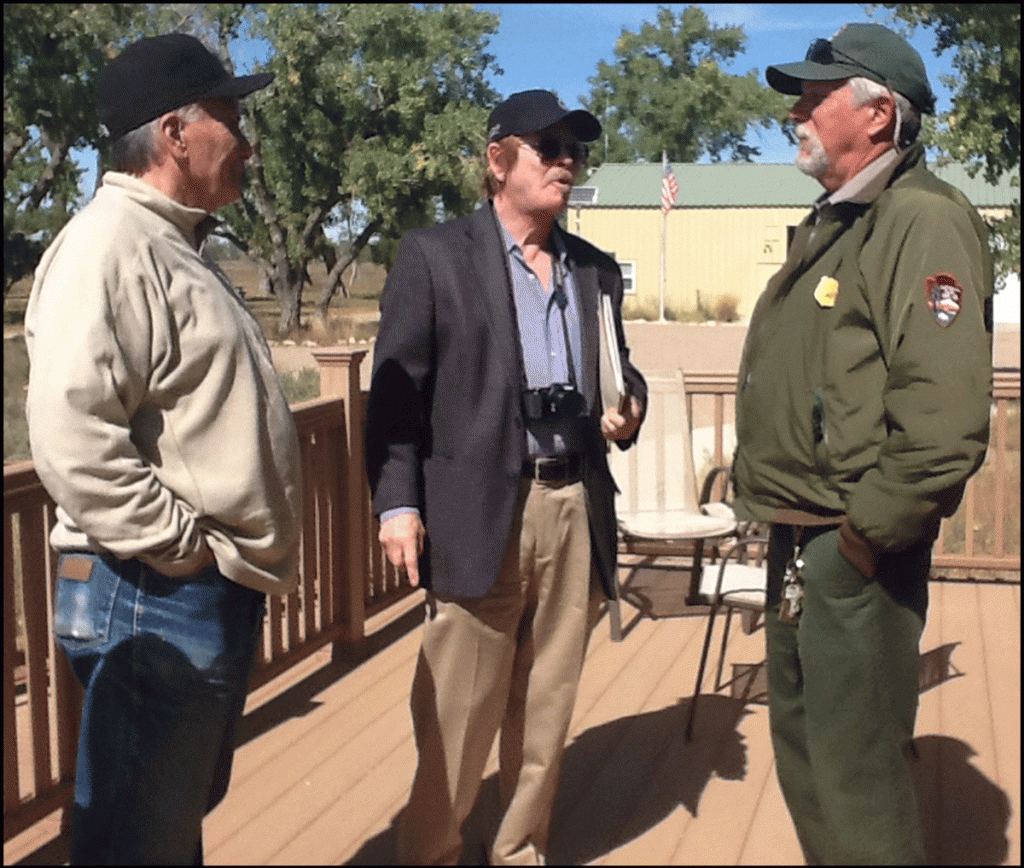
Regional National Park Service ranger Jeff Campbell (right), LK, and John Monnett on 3oct2014 at the Sand Creek Massacre NHS. Campbell, a former police officer, is writing a book about the Sand Creek Massacre as a murder investigation. On this day, he, John, and I enjoyed a good round-robin conversation. (photo © Pailin Subanna-Kraft 2014)
Research is ongoing until the book will be published. The University of Oklahoma Press, my publisher, and I are well acquainted with each other and how we both work. My comment here? I’m one privileged cowboy for OU Press is the top Indian wars publisher in the world and I’m lucky to write for them. We are brothers (and sisters) in war. That is we both want the best possible product published and as such we push for this to happen, … and this means at times that we are in conflict. I wouldn’t have it any other way, for this is the only way to produce a product that has value.
This is John Derek, a film star in the 1950s and early 1960s. Like Errol Flynn he had to deal with the “gorgeous” image, which he hated (like Flynn). Unlike Flynn he walked away from film stardom and became a director-producer-photographer. This image is from Massacre at Sand Creek (1957). I believe that he played the lead role in the film, but it isn’t currently available and I have not seen it. Sometime shortly after Derek walked away from his acting career I met him at his home in Sherman Oaks, Calif., south of Ventura Blvd., in the San Fernando Valley, when I tried out for one of his independent films. His home was macho, and featured major animal game kills and trophies on the floors, furniture, and walls (it was the third such home I had seen like this among the Hollywood crowd, and if you’re into big-game hunting it was impressive). His wife was Bo Derek, and she was one of the stars of the major release hit 10 (1979) with Dudley Moore in the lead role. Derek was preparing for his next film. It wasn’t Tarzan, the Ape Man (1981?) and if my memory is accurate it was Bolero (1984). During my three visits I saw sides to the script, and easily spent six or more hours in Derek’s home during a two-week span). Bo was present at all three tryouts. During my first two interviews, which were more like visits, I hung out mostly with Derek as we spent time chatting and getting to know each other. On my final interview/visit I spent most of my time with Bo while she showed me nude slides of herself as we chatted. When I finally interviewed and read with Derek she went for a nude swim in the pool. A beautiful picture. Unfortunately I didn’t land the part. … That’s life—move on.
For the record I’m approaching the leading and supporting players in the Sand Creek manuscript through their POV. That is I’m attempting to present them through their actions, and honestly I believe almost everyone who has lived or lives believes that what they do is good (at least from their POV). Of course there are people, such as Charles Manson and Ted Bundy, who were massive murderers (I almost had contact with Manson as a place he at times lived at I used for a motorcycle stop and I worked on a mini-series on Bundy called The Deliberate Stranger, 1986). Oh, for the record, Los Angeles has returned to days long gone. August 2015 has a confirmed murder count of 39 per the Los Angeles Times (“Deadliest August in Los Angeles in 8 years,” 4Sept2015). Until 2015 the Times had been bragging about the decline in heinous crime in Los Angeles. I guess they spoke up too soon, and gulp, need to swallow a little of their misrepresentations.
Do not doubt it
The lead up to the massacre at Sand Creek was bloody from both sides, and a lot of innocent people died. The tragedy at Sand Creek in November 1864 is perhaps the most important event of the Cheyenne Indian wars on the central and southern plains for it made the Indians realize that the white man had one goal—To kill them and take their land. This single event marked beginning of the end of the Cheyennes’ freedom. It was an intense time for Indians and whites alike, and many innocents would die horribly. Lives and careers (of both races) would be put on the line. These people made decisions that were popular and not popular among their own race. Some of these decisions led to a loss of prestige, power, and at times death. Heroes would become villains and villains would be vindicated. … And still people would die. By the end of the 1860s the Cheyenne lifeway had come to an end.
Jerry Russell did everything possible to advance my Indian wars writing career, including inviting me to speak at the Order of The Indian Wars 1st Annual West Coast Conference, Fullerton, Ca., on 28feb87 (it would be its last in SoCal). Unfortunately Jerry is now long gone, but luckily the OIW continues to live.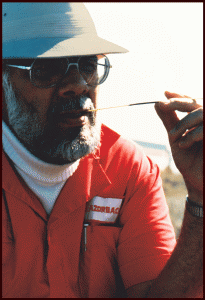
Jerry Russell relaxes above where it was originally thought that the Sand Creek Massacre took place, which was then on private property. I had been doing George Armstrong Custer research in the north, called him up and asked if I and my family could join the tour and then the banquet that night. Without missing a beat, he said, “yes.” He would praise a Flynn/Custer article of mine that had been published, and a number of years later invited me to again talk at an OIW event. Unfortunately I later learned that my daughter’s graduation from high school would happen during the same weekend as the convention and I canceled the talk. Jerry’s response: “I’m glad that someone has their priorities in place.” (photo © Louis Kraft 1987)
Back to The Discovery
The manuscript moves toward production at an increasing pace. Two polishes have been completed. I’m excited. … Although I have kept the plot a secret I want to share a few lines of dialogue that deal with the first meeting of two key players in the story, and it is exploratory. Moreover it gives away nothing of the plot. Character development is usually created with action and dialogue, and in this example it is almost totally through dialogue.
I must again warn you, for I do believe that fully 60 percent of you that read The Discovery when published will be offended by the text. If true, I apologize. … But if not I hope that the text grabs you, holds you, excites you, but more I hope that it captivates you and that you aren’t able to set the book down.
The above is the hope of every writer.
A first meeting in The Discovery
The following is just a sample of how some of the dialogue flows in the working manuscript. This scene (of which only a portion is presented below, is the initial meeting between Greg Weston, who was born blind, and Gail Gordon, a lady eight years older than him. Both are key players in uncovering a discovery 20 years after the fact. It will lead to malpractice, infidelity, a court case, murder, and the destruction of major character’s lives. I have written story as a thriller. Sample text from The Discovery (© Louis Kraft & Robert S. Goodman, MD, 2013-2015) follows:
As Greg continued to talk to the waitress a young woman burst into the deli and raced to Ethel at the cashier station. “Could you tell me whose dog that is?” she said as she pointed at Boots, who was clearly visible through the front window.
“Sure, sweetie.” Ethel pointed at Greg. “See that handsome hunk in the second booth on the right?”
The woman nodded. “Yes.”
“It’s his seeing eye dog.”

This LK portrait dates to 1973 when I was a member of the Melrose Theatre Company, a professional theater group on Melrose Avenue in Hollywood (Paul Kent ran the company). I worked on a lot of scenes with a redhead with kinky hair (whose mother then worked on Broadway in NYC). We hit it off in our personal lives and on stage. She was sexier than hell and I not only liked her I desired her. At that time I was married, meaning that intimacy could never happen. I know that this hurt her (and this would hit the fan about two years later, and what happened on that day ended our friendship and working relationship). Before the end we had spent a lot of time working on a then popular play called Butterflies are Free. It dealt with a blind man and the lady in his life. I learned a lot about blindness at that time and I used it in The Discovery. (photo © Louis Kraft 1973)
“Thanks,” she replied over her shoulder as she walked quickly toward Greg. When he didn’t look at her she tapped his shoulder. “Is that your dog outside by the fire hydrant?”
“Yes. Is there a problem?”
“No—YES!” She inhaled deeply. “Please don’t get upset, but I hit him with the bumper of my car while I was backing out of my parking spot.”
“Was he in the street?”
“No.”
“Then how did you hit him?”
“I guess I turned the wheel too sharply and my right rear wheel climbed the curb.”
“Good driving.”
“I’m sorry. I didn’t mean to hurt him. Look, I checked him over and he seems fine but maybe you should come out with me and take a look at him.”
Greg stood and waved his hand, but didn’t move toward the door.
“Are you coming?”
“In a minute.”
The waitress Molly reached his table. He recognized her by her perfume. “Yes, my dear boy, what do you need?”
“I need to check Boots. Please keep my breakfast warm for me.” He turned to the woman. “Let’s go.”
She took his hand and began to lead the way. He pulled his hand free. “Whoa! What are you doing?”
“I’m sorry, I didn’t … I saw your … cane … and I thought that …” she stammered.
“Never mind. It’s an easy mistake. Look, I’m totally capable of walking to my dog.” He led the way using his cane and she followed him out the door.
Boots leaped up and gently nudged against Greg when he reached the fire hydrant. He smiled. “That’s a good sign,” he said to the woman. “Sit,” he ordered and the dog did. Greg began to examine his care keeper, pet, and best friend beginning with his snout. He then moved to his chest, abdomen, and back before moving to his legs and paws. “He seems fine,” he said over his shoulder.
The woman sighed. “Thank goodness! He must be one tough dog.”
“He should be. He spent two years in the army; he worked with a combat unit of the First Airborne Division. … I’ll check him again at home.”
“Can I take both of you to a vet?” she asked anxiously.
“No!” Although he couldn’t see her, he sensed that his sharp reply stung. “Boots is so damn smart that he would go there on his own if he felt hurt,” he continued in a soft voice.
She laughed but not loudly. “Can I at least take you to breakfast?”
“I was about to have it before you interrupted.”
“I meant …” she began, but couldn’t finish. “I mean, can I pay for your cold breakfast?”
He nodded and smiled smugly. “That you can, providing you join me.”
“I just ate—here as a matter of fact.”
“Understood. I still want you to join me … at the table.”
She smiled and nodded.
He waited but heard nothing. “Are you going to reply?” he asked.
“Oh! I’m sorry. I did, but I didn’t. Yes, I can join you.”
“Good. Lead the way.”
The woman opened the deli door, entered, and Greg followed her. As they sat down the waitress Molly appeared with Greg’s breakfast and coffee. “Now that’s what I call fast service,” Greg said.
“All of us poor waitresses here strive to please you, handsome boy.”
“Molly, give it a break.”
“Humph,” she mumbled as she walked away.

LK at Tujunga House in the late afternoon on 29aug2015. The hair is long and I have become a shaggy dog. What can I say, other than that’s life and that I need photos with long hair for various reasons. Pailin says that I look like a hippie. My view: Like an ugly hippie. (photo © Louis Kraft 2015)
“She’s been hustling me for over a year now.”
“I know why. You are handsome.”
“Enough of this!” He took a slice of toast and broke off a corner, which he dipped into his semi-hardened egg yoke. “You know a little too much about me. Tell me about yourself.”
She gulped in a small breath. “I’m—I’m a little over …” She paused and then started again. “I’m forty-seven years old, overweight, divorced, with two kids in college, and unemployed.”
“Right,” Greg said dryly. “Now give the real sales pitch.”
She chuckled. “Okay, but remember that you asked for it.”
“I like this.”
“Hold on to your seat, handsome boy.”
“I will. But first your name.”
“Gail Gordon. I’m twenty-eight years old, …”
“…and are speaking the truth this time?”
A few thoughts about The Discovery and my world
The above incomplete scene is innocent. I assume that all of us have had innocent times in our lives regardless of the end result. More often than not—at least for me—a lot of good beginnings never went anywhere. With hopefully not sounding too cliché everyone’s lives are different. Things happen and those happenings often direct the future of our lives. Sometimes we’re in control of those changes but often we aren’t. Decisions and events are key to our everyday life but also to the flow of our lives. Did I choose the right course for me? If not, where did I go astray? Could I have done better or did my past life seal my future? We live in a violent world; hell, I live in what could possibly called the vicious world of Los Angeles in 2015. People die violently every day in LA. Robberies are ongoing as are rapes against innocent victims. How many children in their yards, homes, or cars need to die by bullets meant for someone else? I can dig much deeper into the dark area where the last few sentences head, but I won’t (or perhaps I’d silently place a target on my back). … I grew up in a much more innocent time, and those were the good old days (of course, where I lived didn’t deal with racism; actually it wouldn’t have mattered for my parents had no racist thoughts). Those of you that have read my books and these blogs or know me personally know my stance on racism.
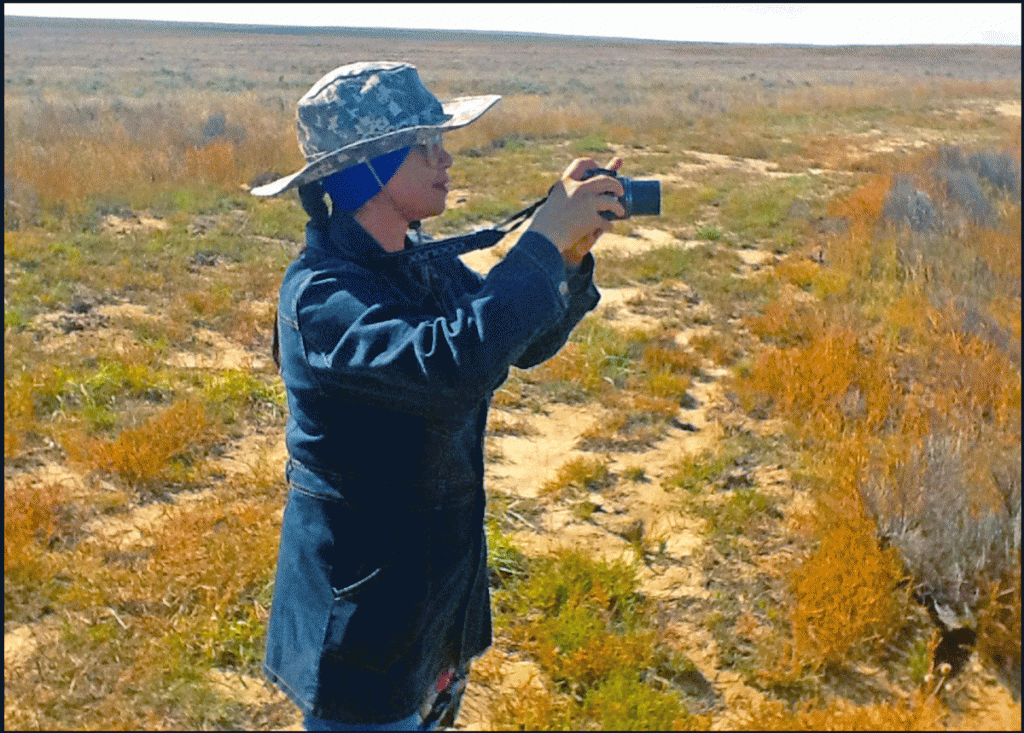
I took this image of Pailin on 3oct2014 as John & Linda Monnett and she and I walked along the western ridge that presents a good view of the land where the Cheyennes and Arapahoes camped along Sand Creek in November 1864. It is a long walk just to reach the southern portion of where the village once stood. She is doing what she loves to do and that is documenting the people, events, and happenings in her life. Not too long ago she asked when our next research trip would happen. I know for a fact that it won’t be this year as our work loads are too large (and hers now includes six months of classes). When the time arrives I know that she’ll be ready to hit the road. (photo © Pailin Subanna-Kraft & Louis Kraft 2014)
The coming novel doesn’t deal with racism but there are hints of it on the edges of the pages. Rather it deals with a physician who has had a pristine medical career. Suddenly an event so far in his past that he can’t remember it triggers events that may end his life as he knows it. For someone who has always been in control he must now face a future in which he has little say. It’s more than frightening as his entire world disintegrates before his eyes. There’s really only one question: Will he and what is most important to him survive?
The Discovery is a medical malpractice thriller that is both intimate and truthful. It deals with subject matter that once was taboo in poplar fiction but perhaps is no longer so. That said it is harsh, to the point, and it will shock many of you. … I hope that you read it for it deals with real people in real situations. If not I understand.


